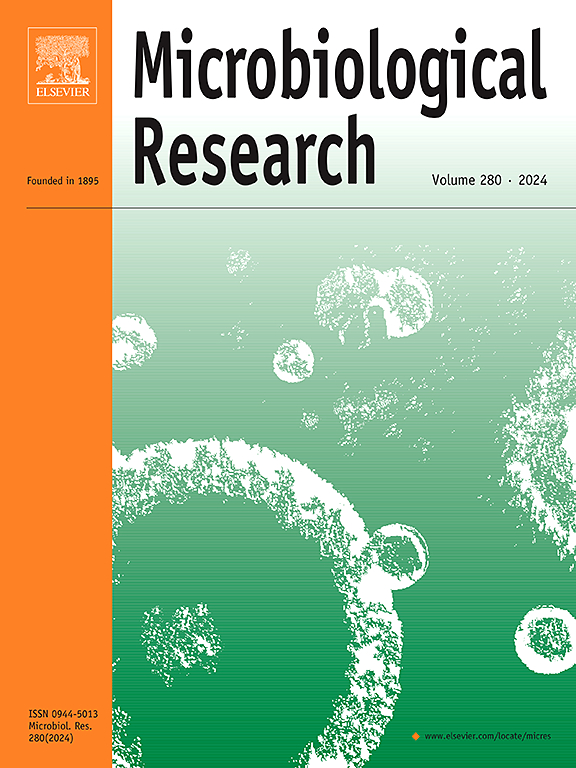青蒿中的楔根细菌通过增加苔藓漏斗虫的定植率来促进侵入性生长
IF 6.1
1区 生物学
Q1 MICROBIOLOGY
引用次数: 0
摘要
入侵植物根系中丛枝菌根真菌(AMF)的定殖率高于本土植物,这与入侵成功有关。关键植物根细菌(或根相关细菌)可以通过与微生物群落的其他成员(如amf)相互作用来影响植物生长。本研究旨在探讨关键类群对AMF定殖的影响及其相互作用对入侵植物生长的影响。本文对中国4个地理种群中蒿属植物根系中常见的关键伴生种进行了鉴定,并对其进行了分离。通过平板和盆栽试验,研究了关键物种对苔藓漏斗虫定殖的影响,并阐明了促进植物生长的机制。鞘氨单胞菌(Sphingomonas)是蒿属植物中常见的拱心根属。研究发现,Sphingomonas sanxanigenens通过促进黄酮类化合物的合成,促进AMF在蒿根中的定植。结果表明,与三叶草和mosseae共接种对蒿的生长有增效作用。本研究为根相关微生物促进AMF在入侵植物中定植的机制提供了新的见解。这些发现证实了关键微生物在杂草入侵中的关键作用,增强了我们对微生物协同作用促进杂草入侵的认识。本文章由计算机程序翻译,如有差异,请以英文原文为准。
Keystone root bacteria in Ambrosia artemisiifolia promote invasive growth by increasing the colonization rate of Funneliformis mosseae
Higher arbuscular mycorrhizal fungi (AMF) colonization rates in the roots of invasive plants than in those of native plants are associated with invasion success. Keystone plant-root bacteria (or root-associated bacteria) can influence plant growth by interacting with other members of the microbial community (eg.AMF). We aimed to investigate the effects of keystone taxa on AMF colonization and their interactions on invasive plant growth. Here, the common key root-associated species from the roots of Ambrosia artemisiifolia among four geographical populations in China were identified, and the strains were subsequently isolated. Plate and pot experiments were conducted to examine the impact of keystone species on the colonization of Funneliformis mosseae and elucidate the mechanisms that enhance plant growth. Sphingomonas was identified as a common keystone root-associated genus of A. artemisiifolia. Sphingomonas sanxanigenens was found to facilitate AMF colonization in the roots of A. artemisiifolia by promoting flavonoid biosynthesis. A synergistic effect on the growth of A. artemisiifolia was observed when the plant was co-inoculated with S. sanxanigenens and F. mosseae. This study provides new insights into the mechanisms whereby root-associated microbes facilitate AMF colonization in invasive plants. These findings confirm the pivotal role of keystone microbes in weed invasion and enhance our understanding that microbial synergistic interactions promote weed invasiveness.
求助全文
通过发布文献求助,成功后即可免费获取论文全文。
去求助
来源期刊

Microbiological research
生物-微生物学
CiteScore
10.90
自引率
6.00%
发文量
249
审稿时长
29 days
期刊介绍:
Microbiological Research is devoted to publishing reports on prokaryotic and eukaryotic microorganisms such as yeasts, fungi, bacteria, archaea, and protozoa. Research on interactions between pathogenic microorganisms and their environment or hosts are also covered.
 求助内容:
求助内容: 应助结果提醒方式:
应助结果提醒方式:


